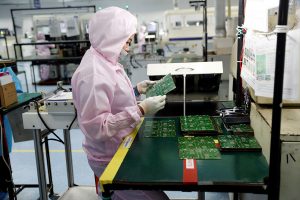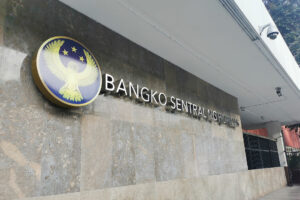Philippine tourism’s share to economy inches up in 2021

By Abigail Marie P. Yraola, Researcher
THE SHARE of the tourism industry to the Philippines’ economic output inched up in 2021, as domestic travel restrictions eased alongside the increase in coronavirus disease 2019 (COVID-19) vaccination rates.
Preliminary data compiled by the Philippine Statistics Authority (PSA) showed that tourism’s direct gross value added (TDGVA) accounted for 5.2% of gross domestic product (GDP) in 2021, slightly higher than the revised 20-year low 5.1% of GDP in 2020.
Measuring the tourism-related value created by various industries, the country’s TDGVA was estimated at P1 trillion at current prices, up by 9.2% from the revised P917.20 billion in 2020.
The TDGVA indicator is based on the results of the Philippine Tourism Satellite Accounts report, which the PSA compiles from the Department of Tourism (DoT).
Asian Institute of Management’s Dr. Andrew L. Tan Center for Tourism Associate Director John Paolo R. Rivera attributed the growth in tourism’s contribution to the reopening of tourism activities.
“This is also driven mostly by domestic tourists, who eagerly want to travel after being cooped up in their homes during the lockdowns,” Mr. Rivera said in an e-mail interview.
The government loosened mobility restrictions in the Philippine capital and nearby areas late last year, as COVID-19 infections dropped and the vaccination rate increased. This allowed many hotels, resorts, restaurants and other tourism-related facilities to reopen, albeit at lower capacity last year.
Mr. Rivera said tourism sector’s growth can further improve this year once more foreigners visit the country for tourism.
The Philippines began accepting foreign tourists from visa-free countries in February this year. This was further expanded in April to include vaccinated tourists from all countries in a bid to help in the recovery of the tourism sector and the overall economy.
In a separate e-mail interview, University of Asia and the Pacific Senior Economist Cid L. Terosa said the more relaxed mobility restrictions helped drive the tourism sector’s slightly better performance last year.
“Tourism-related activities that were choked by the pandemic in 2020 started to regain their vim and vigor in 2021,” he said.
Domestic tourism expenditures, which cover spending of resident visitors within the country either as a domestic trip or part of an international trip, surged by a record 38.7% year on year to P782.51 billion in 2021. However, this was still significantly lower than the P3.14 trillion seen in 2019.
Tourism expenditures by non-residents, on the other hand, declined by 79.2% to P27.62 billion from 2020’s P132.59 billion, as foreign tourists were still not allowed to enter the country.
The share of inbound tourism expenditure to total exports dipped to a record low of 0.6% in 2021 versus the 2.9% share in 2020.
Meanwhile, employment in the tourism industries for the year 2021 was estimated at 4.90 million, which is 11.1% of the total employment. This was higher than the 4.68 million employed in the tourism sector in 2020 or 11.9% of the total jobs.
Mr. Terosa believes that the tourism sector will continue to perform better this year, as long as mobility restrictions and alert levels remain at their most lenient.
“Revenge travel or vacation vengeance will continue to gradually gain momentum this year. Inflationary pressures, however, threaten to curb further rise in tourism demand,” he said. “Given the current situation, however, the tourism sector will probably have a clearer chance to exceed pre-pandemic levels in 2023 and 2024.”




